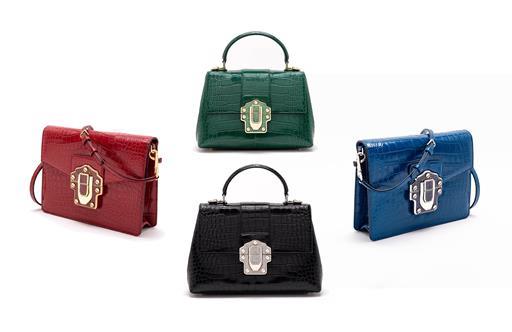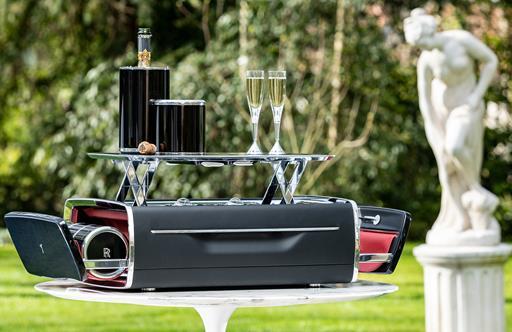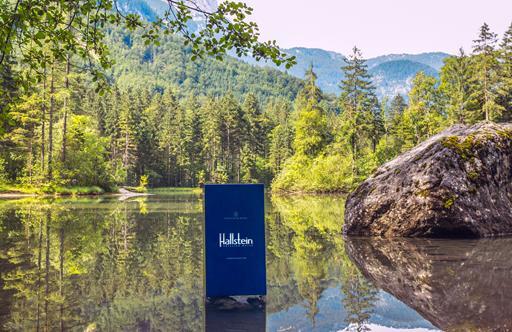Burning Ambitions
Two European chefs have created open-flame destination restaurants in Wales and Sweden.
“There’s food everywhere!” exclaims Danish chef Nicolai Tram, pointing excitedly to the woodland flora of southern Sweden. “Lingonberries. Birch trees full of sap. A lake full of pike, eels and trout. Moose, deer and rabbits all around.” The chef’s enthusiasm for the natural world informs nearly everything about his audacious restaurant, Knystaforsen, which isn’t so much in the forest as it is of the forest. Even though he and his wife, Eva, who manages the dining room, were city people with big-time Copenhagen careers as a celebrity chef and a food writer, it was in the forest that their singular vision was born.
In fact, a burned-out Nicolai had promised himself that he would never open another restaurant when the couple moved into a 19th-century sawmill in Rydöbruk nearly a decade ago. But then they did some camping, and then some campfire cooking, and things took off from there.
“Cooking in the backyard tapped into something from the past – very primal, instantaneous. I needed to learn more,” recalls Nicolai, who was already quite well educated, having trained in the classic French style and worked in northern Spain at the peak of El Bulli’s fame before opening a Nordic bistro in Copenhagen.
 Nicolai Tram (Photo: Eva Tram)
Nicolai Tram (Photo: Eva Tram)
And so he did. He became a master of campfire cooking. They invited friends for increasingly elaborate dinners – with wines selected by Eva, a trained sommelier – until it made sense to invite friends of friends and ask them to pay. Eventually, they moved their family into another house and turned their sawmill into what is now Knystaforsen. The restaurant opened in 2020 and earned both a regular Michelin star and a green one for sustainability in 2022.
Even with those accolades, Tram has kept his love of the campfire. While the fire-dining trend continues to blaze, Knystaforsen’s setup is something else. Most of the “kitchen” is fully outdoors, and towards the end of the menu, guests are invited outside, bundled in blankets, and seated around a bonfire. A chef announces that they’ll be making their take on æbleskiver, a doughnut-like Danish Christmas snack, filled here with pickled white gooseberries and slow-cooked wild boar, then drenched in tallow using a flambadou.
The other 18 or so courses are more refined, but still cooked over open flames and unfailingly of the forest. Tram doesn’t have a procurement radius, but he won’t use fish from the nearby ocean, for example, because it’s not part of his ecosystem. Moose tartare is served on a traditional Swedish waffle with smoked mayonnaise, grated horseradish and pickled elderflower. Lingonberry crackers are topped with pike perch in a garum emulsion and wild rose granita. Grilled duck hearts come with burnt silver onion and redcurrant capers.
 Photo: Eva Tram
Photo: Eva Tram
At Ynyshir, that birch syrup is on display in the vitrine above the bar counter where diners are welcomed. It’s beside a red tin of S&B curry powder from Japan, a jar of Red Boat fish sauce from Vietnam, and Picual olive oil from Spain.
Taken together, they’re an announcement of British chef Gareth Ward’s mission: to serve the best of the best, no matter how far it has to travel. Along with the bottles and jars, he imports fish and A5 wagyu from Japan, truffles from Western Australia, and N25 caviar from Germany. Sheep graze in front of Ynyshir’s dining room, but he buys his lamb from Scotland because, he insists, the quality is higher.
“People go on about sustainability,” he says. “Drawing a ring around your restaurant and saying, I’m not using anything outside of that? It’s an unbelievable story. But if it’s shit, what’s the point? You’re just lying to yourself and everybody else, and you’re robbing people.”
 Gareth Ward (copyright: Imogen Candler)
Gareth Ward (copyright: Imogen Candler)
Ward’s candour is refreshing, and his cooking – which has won Ynyshir two Michelin stars and the title of Best Restaurant in the UK – is likewise indifferent to the expectations of others. “I don’t watch what anybody else is doing,” he says. “I’m not interested.”
While he’s largely freed himself from today’s fine-dining trends (although, it must be noted, there’s caviar on ice cream, in this case flavoured with banana and topped with some of that birch syrup), he’s clearly influenced by world cuisines, especially those of Asia, where he’s spent a fair amount of time working and dining.
The 30-course menu begins with raw fish: sashimi of madai, hamachi and Balfegó bluefin (sometimes dry-aged in his specially designed underground salt chamber) with white soy, tama miso or simple fresh wasabi; an “unrolled hand roll” with preserved truffle; tuna nigiri with Picual olive oil, jalapeño and yoghurt.
 (Copyright: Eleonora Boscarelli)
(Copyright: Eleonora Boscarelli)
From there, it roams around Southeast Asia, starting with fish and seafood, such as local shrimp with green curry and Singapore-style chilli crab, and then moving on to meat and fowl, like a fiery bird larb and French pigeon with smoked eel. He somewhat comes back to Wales for the desserts, emphasising local dairy in custards, ice cream and a boozy tiramisu.
It’s all served to a loud soundtrack, thanks to a DJ who holds court at the front of the dining room, right beside the open kitchen. Sometimes diners end up dancing. Ward loves it when they do: forget the river rocks of the forest. This chef is here to rock and roll.
 (Copyright: Eleonora Boscarelli)
(Copyright: Eleonora Boscarelli)





















